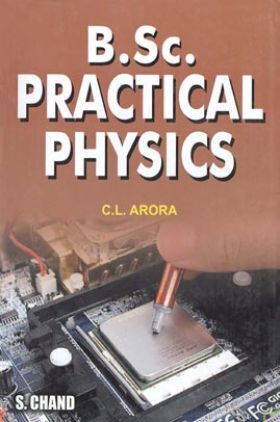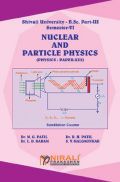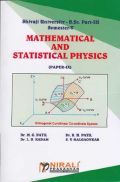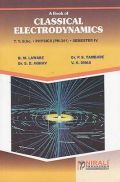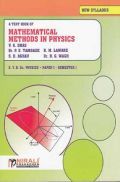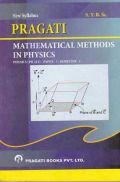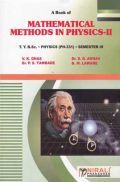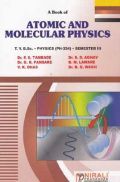This book has been written to meet the requirements of students of the New Three Year B.Sc. Degree Course in Indian Universities. It contains experiments on Mechanics and Properties of Matter, Heat and Statistical Physics, Optics, Sound, Magnetism, Electricity, Atomic and Molecular Physics, Nuclear Physics, Electronics and Solid State Physics according to the latest syllabi for the new three year degree course laid down by the Panjab University, Chandigarh; Guru Nanak Dev University, Amritsar; Panjabi University, Patiala; Kurukshetra University, Kurukshetra; Maharishi Dayanand University, Rohtak and Himachal Pradesh University, Simla in particular and other Indian Universities in general. The text has been thoroughly revised, rewritten and brought up-to-date by adding all the new experiments included in the latest syllabi.
This book Useful for B.Sc. Practical Physics Students.
1. According to the latest system of examination adopted by most of the Indian Universities, the candidates are required to write the theory of the experiment before starting the experimental work. With this aim in view, a brief and relevant theoretical discussion of the experiment has been included in the body of the experiment properly so that a student actually reads and understands it before he starts working. In addition, the detailed theory has also been given separately wherever necessary.
2. A brief description of the apparatus required during the experiment has been given and the range of various measuring instruments has been specified so that the observations can be
taken with a fair degree of accuracy.
3. The procedure has been divided into steps so that a student may be able to proceed systematically even without the direct guidance of a teacher.
4. The system of recording the observations in a tabular form has been encouraged throughout the text so that various readings can be compared at a glance.
5. The precautions have not only been given at the end of the experiment but also have been included in the instructions so that a student actually observes them even when he is performing the experiment.
6. As there is a growing tendency on the part of examiners to ask oral questions about the experiments done by a student in the examination, a number of such questions have been given
at the end of each chapter for practice.
It is hoped that with all these and other features this book will prove very useful for the students.
Introduction
1. Units, Errors, And Graphs
2. Measurement Of Length, Mass, And Time
Part I— Mechanics And Properties Of Matter
3. Moment Of Inertia
4. Acceleration Due To Gravity
5. Elastic Constants
6. Surface Tension And Viscosity
7. One Dinensional Collisions
Part II—Heat And Statistical Physics
8. Expansion Of Gases
9. Thermal Conductivity
10. Mechanical Equivalent Of Heat
11. Introduction To Theory Of Probability
Part III—Optics
12. Focal Length Of Lenses
13. Magnifying Power And Resolving Power Of A Telescope
14. Sextant
15. Photometry
16. Spectrometer
17. Interference
18. Diffraction
19. Polarisation
Part IV—Sound
20. Vibrations Of Stretched Strings
21. Kundt'stube
22. Ultrasonics
Part V—Magnetism
23. Magnetic Measurements
Part VI—Electricity
24. Electrical Instruments
25. Magnetic Effects
26. Measurement Of Resistance
27. Measurement Of High Resistance
28. Measurement Of Low Resistance
29. Electrolysis
30. Thermocouples
31. Ballistic Galvanometer And Magnetic Field
32. Capacitance
33. Electromagnetic Induction
34. Alternating Currents
35. Multimeter
Part VII—Atomic, Molecular, And Nuclear Physics
36. Measurement Of Elm And Electronic Charge
37. Ionisation Potential Of Mercury
38. Photoelectric Effect
39. Geiger Mueller Counter
40. Radioactivity
41. Laser
42. Cathode Ray Oscilloscope
43. R.C. Circuit
44. Magnetic Properties Of Materials
Part VIII—Solid State Physics And Electronics
45. Thermionic Emission
46. Thermionic Valves
47. Semiconductor Diode
48. Thermistor
49. Band Gap Of Semi-conductors
50. Rectifiers And Filters
51. Transistors
52. Field Effect Transistor
53. Oscillators
54. Transistor Amplifiers
55. Voltage Multiplier
56. Silicon Controlled Rectifier
57. Radio Transmission And Reception
58. Operational Amplifiers
Part IX—Additional Experiments
59. Thermal Expansion Of Crystals
60. Adiabatic Expansion Of A Gas
61. Total Radiation Law
62. Principal Points Of A Lens System
63. Absorption Spectra Of Iodine
64. Divergence And Wavelength Of Laser
65. Interference
66. Damped Oscillator
67. Efficiency Of An Electric Device
68. Magnetic Susceptibility
69. Logic Circuits
Part X—List Of Experiments For Punjab Technical University
70. Polaris Ability Of A Dielectric
71. Michelson's Interferometer
72. Characteristics Of Rectangular Waveguide
73. Fibre Optics
Tables Of Constants
Logarithmic Tables

